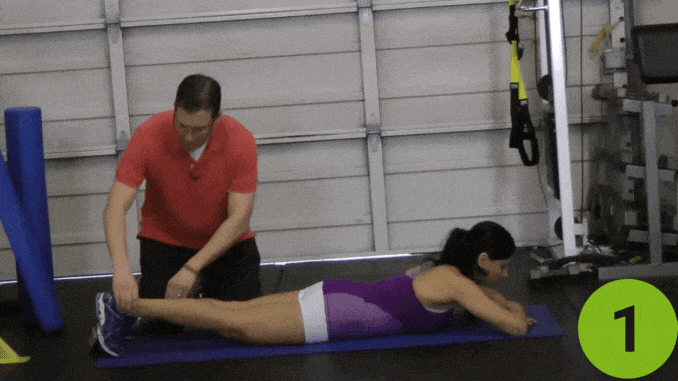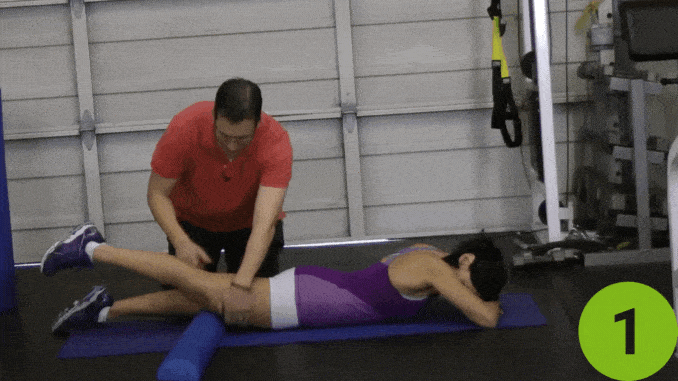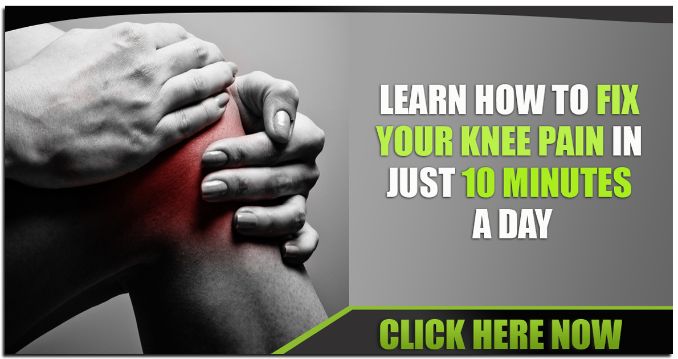As someone who’s always exploring effective ways to relieve muscle tightness and improve mobility, I’ve found a game-changing stretch that specifically targets the sartorius muscle. This muscle, which runs down the length of your thigh, plays a key role in hip flexion and knee movement. One of the best stretches for the sartorius muscle involves sitting on the floor in a butterfly position and slowly pushing your knees toward the ground while keeping your back straight.
This stretch can significantly improve flexibility and help reduce tightness in your thighs. It has not only helped me personally eliminate hip tightness, but it has also been a favorite among my clients.
But first, let’s talk about sartorius muscle pain. This pain often stems from overuse or strain, manifesting as discomfort in the inner thigh or knee, and can really interfere with daily activities.
Understanding this can help us better appreciate the benefits of the stretch I’m about to introduce. So, let’s dive into how this best sartorius muscle stretch can enhance your flexibility and support your hip health.
Symptoms of Sartorius Muscle Pain
If your sartorius muscle is tight, you might experience:
- Sartorius Muscle Pain, particularly in your quadriceps muscles located in the front thighs
- Stiffness in your leg
- Weakness in your hip and leg muscles
- Difficulty moving your hip or knee [1]
Anatomy and Function of The Sartorius Muscle

The sartorius muscle, the longest in the human body, stretches down the thigh’s front in a long, slender strip. Located in the outer layer of thigh muscles, it’s often overlooked despite its role in hip flexion.
This muscle is crucial for both knee and hip movements, affecting how we walk and perform various activities. Engaging and strengthening the sartorius is important for joint health and overall mobility. Its functions include:
Primary Functions:
- Hip Flexion: This is the primary function of the sartorius. It contracts to bring the knee towards the chest, as seen in actions like walking, running, and climbing.
- Knee Flexion: In addition to hip flexion, the sartorius also assists in bending the knee, particularly when the knee is already partially flexed.
Secondary Functions:
- Hip External Rotation: The sartorius can help rotate the thigh outward, away from the body. This movement is involved in actions like kicking a ball or turning the foot outward.
- Hip Abduction: While not its primary role, the sartorius can also contribute to moving the thigh away from the midline of the body, a movement known as hip abduction.
“The Sartorius has a couple of different jobs that help move the hip and the knee joints. It helps flex both the hip and the knee, and then helps abduct the hip joint, helps rotate outwards on the hip, and rotate inwards on the knee.”– Dr. Megan Gomez [2]
Associated Conditions with Sartorius Muscle Pain
Pain in the sartorius muscle can be quite uncomfortable, mainly because it’s involved in so many of our daily movements like walking, sitting, and bending the knee. Here are some common conditions associated with sartorius muscle pain:
- Muscle Strain: Overstretching or tearing the muscle fibers, often due to sudden movements or overuse, can lead to pain and swelling.
- Tenderness and Swelling: Repetitive activities that involve the hip and knee can cause the sartorius muscle to become sore and swollen.
- Reduced Mobility: When the sartorius muscle is in pain, you might find it harder to move your leg, affecting how you walk or run.
Treatment for Sartorius Muscle Pain
Treating pain in the sartorius muscle typically involves a few straightforward steps to help alleviate discomfort and promote healing:
- Rest: Give your leg a break. Avoiding activities that trigger or worsen the pain is crucial to prevent further injury.
- Ice Therapy: Applying ice packs to the affected area can help reduce inflammation and numb the pain. It’s best to do this for about 15-20 minutes every few hours during the first couple of days after feeling pain.
- Compression: Using an elastic bandage or a compression wrap can help minimize swelling in the thigh.
- Gentle Stretching: Once the acute pain decreases, gentle stretching exercises can help restore flexibility and strength to the muscle.
- Physical Therapy: A physical therapist can design a specific program that includes exercises to strengthen the muscles and improve the range of motion.
If home treatments don’t relieve the pain or if the pain is severe, it’s important to seek medical advice. A healthcare provider might recommend additional treatments such as medication for pain relief or inflammation or in some cases, more specialized therapies.
Best Stretch for the Sartorius Muscle
Note: To get the most out of these stretches, you might want to have a friend or family member assist you. They can help you hold your leg in place or apply gentle pressure to deepen the stretch.
1. Sartorius Muscle Stretch

Sartorius Muscle Stretch
- Positioning: First, have your assistant help you lie down comfortably on your stomach. Ensure your legs are slightly separated, giving your hips more room to move.
- Bend the knee: Your assistant should gently guide one of your knees to bend, bringing your heel up toward your glutes. Once the knee is bent, they’ll help rotate your leg inward by gently dropping your heel to the side, internally rotating your thigh.
- Adduct the hip: Next, your assistant will move your bent knee slightly inward, bringing it closer to your midline. This will adduct the hip, targeting the stretch effectively.
- Focus on the muscle: At this point, you should feel the stretch activating your Sartorius muscle. Your assistant can check in with you to ensure the stretch is hitting the right spot.
2. Sartorius Muscle Stretch with Foam Roller

Sartorius Muscle Stretch with Foam Roller
- Position the foam roller: If you’re not feeling much stretch, your assistant can enhance it by adding a bit of hip extension. They can do this by sliding a foam roller underneath your thigh, just above the knee.
- Repeat the movement: Once the foam roller is in place, you’ll go through the same sequence. Your assistant will help:
- Bend your knee.
- Gently drop your heel outward to rotate the thigh internally.
- Guide your thigh inward to adduct the hip.
- Feel the stretch: As you go through the stretch, you should now feel it more intensely, either in the hip area or down near your knee. Your assistant can make sure you’re comfortable and feeling the stretch in the right spots.
What if you don’t feel any stretch, or what if you don’t feel anything?
Go back and make sure that you have done the exercise correctly, looking at the bending of that knee, dropping of that heel out (internally rotating that thigh), moving of that thigh inwards or adducting of that hip, and then adding some hip extension.
If you have made sure that you have tried progression one and progression 2, your technique is perfect, and you don’t feel anything, there is a good chance that you don’t need to stretch out your sartorius muscle.
When To Contact a Doctor When You Have Sartorius Muscle Pain
If you have sartorius muscle pain, it’s a good idea to see a doctor if:
- The pain sticks around or gets worse even after a few days of home care.
- There’s a lot of swelling or bruising on your thigh, which might mean the injury is serious.
- You have trouble walking or start limping because of the pain.
- You feel numbness or tingling, which could mean a nerve is affected.
- The muscle area feels hot, looks red, or if you feel feverish, as these could be signs of an infection.
Seeing a doctor can help make sure you get the right treatment to feel better.
Conclusion: Managing Tight Sartorius Muscle
The sartorius muscle, the longest muscle in the body, can cause significant discomfort when tight. Symptoms may include pain in the front of the hip, inner thigh, or knee, along with stiffness and limited range of motion. To address this, effective stretching and management strategies are crucial. [3]
By incorporating assisted stretches that target the sartorius muscle, such as those involving hip flexion, internal rotation, and adduction, you can effectively loosen the muscle and improve your hip and knee mobility. Additionally, foam rolling can help alleviate tightness and promote flexibility. It’s essential to perform these exercises with proper form and listen to your body to avoid overstretching or exacerbating pain.
If pain persists despite these measures, consulting a healthcare professional is recommended for further evaluation and treatment. They can determine the underlying cause of the tightness, such as overuse, injury, or other medical conditions, and provide tailored recommendations. Remember, addressing a tight sartorius muscle is crucial for maintaining optimal lower body function and preventing future complications.
Give that a go, and let me know how it goes.
Rick Kaselj, MS
If you are looking for a program to help you overcome knee pain and get back to pain-free workouts, then check out Knee Pain Solve:
FAQ
How do you loosen the sartorius muscle?
To loosen the Sartorius’s muscle, stretches like hip adduction and internal rotation (similar to the one you’re doing) are effective. Adding foam rolling to massage the muscle or performing gentle stretches can relieve tightness. You can also perform hip flexor stretch and other stretch exercises targeting the surrounding muscles.
Symptoms of a tight Sartorius muscle may include pain or discomfort in the front of the hip particularly when shifting the hips forward, inner thigh, or knee. You may also experience a limited range of motion or tightness when moving your hip or leg.
What are the symptoms of a tight sartorius muscle?
What is inflammation of the sartorius?
Inflammation of the Sartorius muscle, also known as sartorius tendinitis, occurs when the muscle or its tendon becomes irritated, often due to overuse or strain. This can result in pain, swelling, and difficulty with leg movement.
What does the sartorius muscle do?
The Sartorius muscle is responsible for flexing, abducting, and externally rotating the hip. It also helps with knee flexion, working as a key player in activities like crossing your legs or walking.


